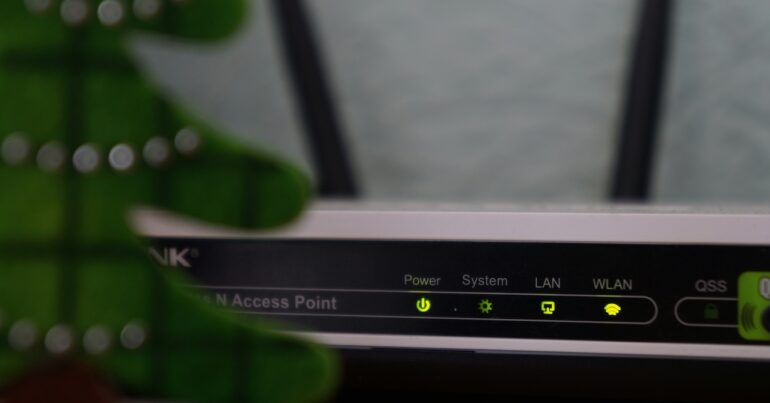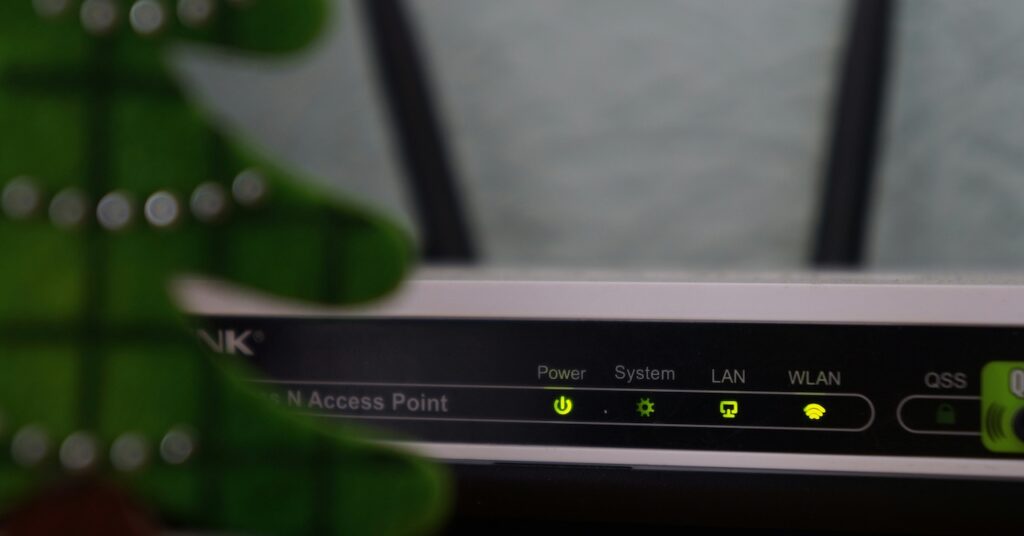Setting up a home network may seem daunting, but it doesn’t have to be. With the right gear and some simple steps, you can create a connected home network to share files, devices, and internet access across all your devices.
This straightforward, step-by-step guide will walk you through everything you need to set up a functional home network from start to finish. Whether you need to get multiple computers online or enable smart home devices to communicate, following this home network tutorial will help you get networked in no time. Let’s get started!
Table of Contents
Home Networking Equipment
Before setting up your network, you’ll need to purchase the necessary equipment. The main components are:
- Router: Connects your network to the internet.
- Switch: Adds additional wired ports to connect multiple devices.
- Wireless access point: Provides WiFi connectivity for wireless devices.
- Cables: Ethernet cables connect wired devices to the router or switch.
- Network hardware: Modem, routers, switches etc.
Many consumer routers available today combine a router, switch, access point, and modem in one device. For simplicity, a multifunction router is recommended for most home networks.
You’ll also need an internet connection from your Internet Service Provider (ISP). Options include:
- Cable
- DSL
- Fiber
- Satellite
Contact your ISP to establish internet service or get recommendations for networking equipment.
Step 1: Set Up the Router
The router is the central component of your home network. Follow these steps to set it up:
- Plug in the router to a power outlet and turn it on.
- Connect the internet port on the router to the modem using an Ethernet cable.
- Connect a computer directly to one of the router’s LAN ports via Ethernet cable.
- Open the router admin page in a web browser (default is 192.168.1.1).
- Run the setup wizard to configure router settings like WiFi name, passwords, IP address & more.
Your router admin page looks like this:
Once the router is configured, connect other wired devices like PCs, smart TVs, game consoles, and printers to the LAN ports to add them to the network.
Step 2: Set Up the Wireless Network
To add WiFi connectivity, you’ll need to configure the wireless settings on the router:
- Choose a WiFi network name (SSID) and password.
- Select the wireless standards to use – recommend WiFi 5 (802.11ac) or WiFi 6 (802.11ax) for best performance.
- Set the transmission channel – try channels 1, 6 or 11 to minimize interference.
- Save settings after entering wireless configuration.
Wireless devices like smartphones, tablets, and laptops can now connect to the WiFi using the SSID and password.
Step 3: Connect Switch and Access Points
If your router lacks sufficient LAN ports or WiFi range, add a network switch and wireless access points:
- Network Switch: Provides more wired LAN ports to connect devices by plugging into an open router LAN port.
- Wireless Access Point: Boosts WiFi range by placing in dead zones. Access points connect to the router via Ethernet cable to broadcast the same wireless network everywhere.
More wired devices can now plug into the switch’s extra ports, while access points enhance your WiFi coverage area.
Step 4: Configure DHCP and Addressing
Devices receive network addressing like IP addresses automatically from the router’s DHCP server:
- DHCP dynamically assigns addresses to devices upon connection.
- The router acts as the default gateway for internet traffic.
- NAT (network address translation) enables many private IP addresses to share one public address.
You don’t need to manually set IPs or configure NAT. DHCP and NAT occur automatically with most consumer router admin interfaces.
Step 5: Set Up Port Forwarding
Port forwarding routes incoming internet traffic to specific devices:
- Configure port forwarding on the router admin interface.
- Specify the internal IP and port the traffic is sent to.
- Allows public access to devices like security cameras and web servers.
Tip: Reserve static internal IPs so port forwards don’t get broken when DHCP leases expire.
Step 6: Configure WiFi Security
Use WPA2 or WPA3 wireless encryption to secure your WiFi network:
- Prevent unauthorized access and eavesdropping.
- Use a strong WiFi password with complexity and length.
- Change default router admin credentials.
- Disable WPS if available.
- Use MAC filtering to limit device access.
This provides essential security for your wireless home network.
Step 7: Set Up a Guest Network
Adding a separate guest SSID makes it easy to share WiFi access:
- Configure a guest WiFi network on the router admin.
- No password required for guest access.
- Guest traffic is isolated from main LAN network and devices.
- Limit speed or data for guest network.
- Provides WiFi access for visitors without compromising security.
Step 8: Connect Internet of Things Devices
Smart home devices like lights, thermostats, cameras and appliances need WiFi access to enable remote control:
- Connect IoT devices to power nearby the router.
- Follow manufacturer instructions to connect to the wireless network.
- Manage devices from their apps or your home automation platform.
- Place any outdoor devices within range of WiFi or wireless extenders.
Troubleshooting connectivity issues may require moving devices closer, adding extenders or using mesh networks.
Step 9: Test Connectivity
Once your network is set up, test devices to confirm proper connectivity:
- Check internet access – open web pages from computers and smartphones.
- Verify app functionality for smart home and media devices.
- Confirm WiFi signal strength throughout home.
- Test streaming, gaming, downloads to check speed.
- Ensure port forwarding works for remote device access.
- Validate security settings are active.
Your home network is now fully operational! Manage settings through the router admin dashboard and troubleshoot issues as they arise. With good equipment, setup and maintenance, your home network will provide the connectivity you need.
FAQ: Troubleshooting Home Network Issues
Setting up a home network is fairly straightforward, but occasional issues can arise. Here are some common problems and solutions:
No internet access
- Check modem and router connections.
- Power cycle the modem and router.
- Contact ISP if connection issue persists.
Can’t access router admin page
- Default is 192.168.1.1 or 192.168.0.1.
- Reset router to factory settings if needed.
Slow WiFi speeds
- Move closer to access point.
- Change WiFi channel on router.
- Switch from 2.4GHz to 5GHz band.
Weak WiFi signal
- Relocate router to a central location.
- Eliminate objects causing interference.
- Add wireless range extender or access point.
App doesn’t work
- Reinstall app and reboot device.
- Enable port forwarding if needed.
- Check firewall or security blocking access.
Can’t cast or stream
- Move WiFi devices closer to router/access points.
- Reduce WiFi interference from other devices.
- Plug streaming device into wired LAN connection.
Ping and speed tests can help diagnose connectivity and performance issues. Rebooting the router and devices will resolve many problems. Seek help from your ISP or router manufacturer for advanced troubleshooting.
Conclusion
A home network creates the vital digital connections between your devices, apps, sites and services. Following this straightforward home network setup guide will allow you to:
- Get multiple wired and wireless devices online
- Share network resources like storage, printers
- Stream media, game, work and surf the web
- Control smart home appliances and IoT
- Beef up security and parental controls
- Troubleshoot and optimize network performance
The most important steps are choosing a good multifunction router, securing the wireless access, connecting devices, and performing connectivity tests. Investing in reliable networking equipment and setting up correctly will lead to an enjoyable networking experience at home.
With everyone having multiple gadgets these days, a home network is a must for any technology-connected household. Get everyone and everything talked to each other with these simple home network setup steps. You’ll enjoy seamless digital connectivity throughout your smart home.



